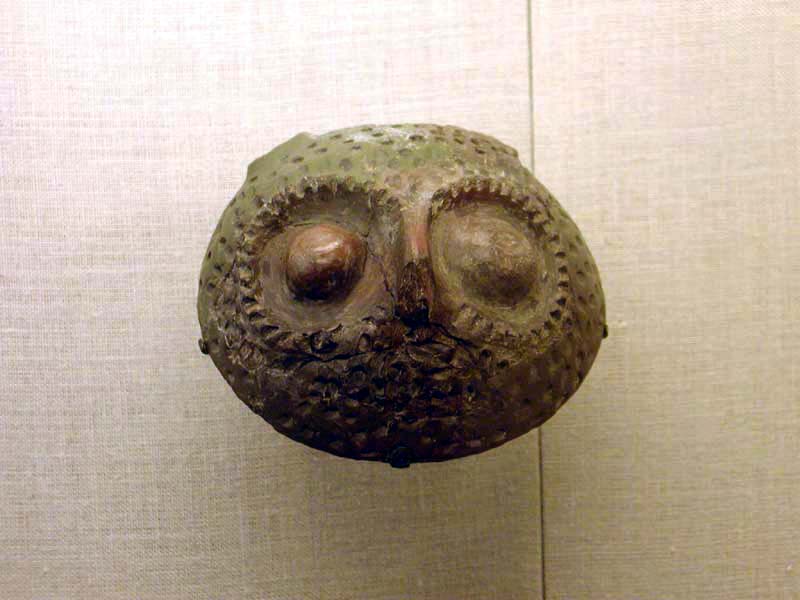|
Chen Pengnian
Chen Pengnian (, 10 January 1664 – 9 February 1723) was a Han Chinese politician and scholar in the Qing dynasty. Biography Chen was a native of Xiangtan, Hunan. He spent much of his early life in the mountains where his family fled to avoid the disturbances of the Revolt of the Three Feudatories. During this time, he studied the classics and took the imperial examination upon his return to Xiangtan. He obtained a ''jinshi'' degree in 1691. He began his official career five years later as a magistrate in Xian, Zhejiang, before occupying the same post in Shanyang, Jiangsu. His upright and incorruptible character became renowned. Chen was a model official, earning the nickname “Chen Qingtian” for his honesty and frugality. From 1703 to 1705, he served as prefect of Nanjing. During this time, his superior, Ašan, governor-general of Jiangsu, falsely accused Chen of bribery and establishing lecture halls in former brothels. Chen was sentenced to death but given an imperia ... [...More Info...] [...Related Items...] OR: [Wikipedia] [Google] [Baidu] |
Jiangsu
Jiangsu (; ; pinyin: Jiāngsū, alternatively romanized as Kiangsu or Chiangsu) is an eastern coastal province of the People's Republic of China. It is one of the leading provinces in finance, education, technology, and tourism, with its capital in Nanjing. Jiangsu is the third smallest, but the fifth most populous and the most densely populated of the 23 provinces of the People's Republic of China. Jiangsu has the highest GDP per capita of Chinese provinces and second-highest GDP of Chinese provinces, after Guangdong. Jiangsu borders Shandong in the north, Anhui to the west, and Zhejiang and Shanghai to the south. Jiangsu has a coastline of over along the Yellow Sea, and the Yangtze River passes through the southern part of the province. Since the Sui and Tang dynasties, Jiangsu has been a national economic and commercial center, partly due to the construction of the Grand Canal. Cities such as Nanjing, Suzhou, Wuxi, Changzhou, and Shanghai (separated from Jia ... [...More Info...] [...Related Items...] OR: [Wikipedia] [Google] [Baidu] |
Qing Dynasty Government Officials
The Qing dynasty ( ), officially the Great Qing,, was a Manchu-led imperial dynasty of China and the last orthodox dynasty in Chinese history. It emerged from the Later Jin dynasty founded by the Jianzhou Jurchens, a Tungusic-speaking ethnic group who unified other Jurchen tribes to form a new "Manchu" ethnic identity. The dynasty was officially proclaimed in 1636 in Manchuria (modern-day Northeast China and Outer Manchuria). It seized control of Beijing in 1644, then later expanded its rule over the whole of China proper and Taiwan, and finally expanded into Inner Asia. The dynasty lasted until 1912 when it was overthrown in the Xinhai Revolution. In orthodox Chinese historiography, the Qing dynasty was preceded by the Ming dynasty and succeeded by the Republic of China. The multiethnic Qing dynasty lasted for almost three centuries and assembled the territorial base for modern China. It was the largest imperial dynasty in the history of China and in 1790 the four ... [...More Info...] [...Related Items...] OR: [Wikipedia] [Google] [Baidu] |
Public Administration
Public Administration (a form of governance) or Public Policy and Administration (an academic discipline) is the implementation of public policy, Administration (government), administration of Government, government establishment (Governance#Public governance, public governance), management of Non-profit organisation, non-profit establishment (Governance#Nonprofit governance, nonprofit governance), and also a subfield of political science taught in Public policy school, public policy schools that studies this implementation and prepares civil servants, especially those in administrative positions for working in the public sector, voluntary sector, some industries in the private sector dealing with Government Relations, government relations and regulatory affairs, and those working as think tank researchers. As a "field of inquiry with a diverse scope" whose fundamental goal is to "advance management and policies so that government can function." Some of the various definitions w ... [...More Info...] [...Related Items...] OR: [Wikipedia] [Google] [Baidu] |
Henan
Henan (; or ; ; alternatively Honan) is a landlocked province of China, in the central part of the country. Henan is often referred to as Zhongyuan or Zhongzhou (), which literally means "central plain" or "midland", although the name is also applied to the entirety of China proper. Henan is a birthplace of Han Chinese civilization, with over 3,200 years of recorded history and remained China's cultural, economic and political center until approximately 1,000 years ago. Henan Province is home to many heritage sites, including the ruins of Shang dynasty capital city Yin and the Shaolin Temple. Four of the Eight Great Ancient Capitals of China, Luoyang, Anyang, Kaifeng and Zhengzhou, are in Henan. The practice of tai chi also began here in Chen Jia Gou Village (Chen style), as did the later Yang and Wu styles. Although the name of the province () means "south of the ellowriver.", approximately a quarter of the province lies north of the Yellow River, also known as th ... [...More Info...] [...Related Items...] OR: [Wikipedia] [Google] [Baidu] |
Grand Canal (China)
The Grand Canal, known to the Chinese as the Jing–Hang Grand Canal (, or more commonly, as the「大运河」("Grand Canal")), a UNESCO World Heritage Site, is the longest canal or artificial river in the world. Starting in Beijing, it passes through Tianjin and the provinces of Hebei, Shandong, Jiangsu, and Zhejiang to the city of Hangzhou, linking the Yellow River and Yangtze River. The oldest parts of the canal date back to the 5th century BC, but the various sections were first connected during the Sui dynasty (581–618 AD). Dynasties in 1271–1633 significantly restored and rebuilt the canal and altered its route to supply their capital. The Grand Canal played a major role in reunifying north and south China. The canal was built by conscripted laborers and connected the Yellow River in the north with the Yangtze River in the south, which made it much easier to transport grain from the south to the centers of political and military power in north China. The total len ... [...More Info...] [...Related Items...] OR: [Wikipedia] [Google] [Baidu] |
Suzhou
Suzhou (; ; Suzhounese: ''sou¹ tseu¹'' , Mandarin: ), alternately romanized as Soochow, is a major city in southern Jiangsu province, East China. Suzhou is the largest city in Jiangsu, and a major economic center and focal point of trade and commerce. Administratively, Suzhou is a prefecture-level city with a population of 6,715,559 in the city proper, and a total resident population of 12,748,262 as of the 2020 census in its administrative area. The city jurisdiction area's north waterfront is on a lower reach of the Yangtze whereas it has its more focal south-western waterfront on Lake Tai – crossed by several waterways, its district belongs to the Yangtze River Delta region. Suzhou is now part of the Greater Shanghai metro area, incorporating most of Changzhou, Wuxi and Suzhou urban districts plus Kunshan and Taicang, with a population of more than 38,000,000 residents as of 2020. Its urban population grew at an unprecedented rate of 6.5% between 2000 and 2014, ... [...More Info...] [...Related Items...] OR: [Wikipedia] [Google] [Baidu] |
Kangxi Emperor
The Kangxi Emperor (4 May 1654– 20 December 1722), also known by his temple name Emperor Shengzu of Qing, born Xuanye, was the third emperor of the Qing dynasty, and the second Qing emperor to rule over China proper, reigning from 1661 to 1722. The Kangxi Emperor's reign of 61 years makes him the longest-reigning emperor in Chinese history (although his grandson, the Qianlong Emperor, had the longest period of ''de facto'' power, ascending as an adult and maintaining effective power until his death) and one of the longest-reigning rulers in history. However, since he ascended the throne at the age of seven, actual power was held for six years by four regents and his grandmother, the Grand Empress Dowager Xiaozhuang. The Kangxi Emperor is considered one of China's greatest emperors. He suppressed the Revolt of the Three Feudatories, forced the Kingdom of Tungning in Taiwan and assorted Mongol rebels in the North and Northwest to submit to Qing rule, and blocked Tsa ... [...More Info...] [...Related Items...] OR: [Wikipedia] [Google] [Baidu] |
Brothels
A brothel, bordello, ranch, or whorehouse is a place where people engage in sexual activity with prostitutes. However, for legal or cultural reasons, establishments often describe themselves as massage parlors, bars, strip clubs, body rub parlours, studios, or by some other description. Sex work in a brothel is considered safer than street prostitution. Legal status On 2 December 1949, the United Nations General Assembly approved the Convention for the Suppression of the Traffic in Persons and of the Exploitation of the Prostitution of Others. The Convention came into effect on 25 July 1951 and by December 2013 had been ratified by 82 states. The Convention seeks to combat prostitution, which it regards as "incompatible with the dignity and worth of the human person." Parties to the Convention agreed to abolish regulation of individual prostitutes, and to ban brothels and procuring. Some countries not parties to the convention also ban prostitution or the operation of brot ... [...More Info...] [...Related Items...] OR: [Wikipedia] [Google] [Baidu] |
Nanjing
Nanjing (; , Mandarin pronunciation: ), Postal Map Romanization, alternately romanized as Nanking, is the capital of Jiangsu Provinces of China, province of the China, People's Republic of China. It is a sub-provincial city, a megacity, and the List of cities in China by population, second largest city in the East China region. The city has 11 districts, an administrative area of , and a total recorded population of 9,314,685 . Situated in the Yangtze River Delta region, Nanjing has a prominent place in Chinese history and Chinese culture, culture, having served as the historical capitals of China, capital of various Dynasties in Chinese history, Chinese dynasties, kingdoms and republican governments dating from the 3rd century to 1949, and has thus long been a major center of culture, education, research, politics, economy, transport networks and tourism, being the home to Port of Nanjing, one of the world's largest inland ports. The city is also one of the fifteen sub-provin ... [...More Info...] [...Related Items...] OR: [Wikipedia] [Google] [Baidu] |
Huai'an District
Huai'an District () is one of four districts of the prefecture-level city of Huai'an, Jiangsu Province, China. The southeast district was formerly named Shanyang County (), Huai'an County () and Chuzhou District (). The district is the home town of historical figures such as Zhou Enlai, Wu Cheng'en, Han Xin Han Xin (; 231/230–196 BC) was a Chinese military general and politician who served Liu Bang during the Chu–Han Contention and contributed greatly to the founding of the Han dynasty. Han Xin was named as one of the "Three Heroes of the ea ... and Guan Tianpei Administrative divisions In the present, Huai'an District has 21 towns and 6 townships. ;21 towns ;6 townships References www.xzqh.org External links County-level divisions of Jiangsu Huai'an {{Jiangsu-geo-stub ... [...More Info...] [...Related Items...] OR: [Wikipedia] [Google] [Baidu] |
Han Chinese
The Han Chinese () or Han people (), are an East Asian ethnic group native to China. They constitute the world's largest ethnic group, making up about 18% of the global population and consisting of various subgroups speaking distinctive varieties of the Chinese language. The estimated 1.4 billion Han Chinese people, worldwide, are primarily concentrated in the People's Republic of China (including Mainland China, Hong Kong and Macau) where they make up about 92% of the total population. In the Republic of China (Taiwan), they make up about 97% of the population. People of Han Chinese descent also make up around 75% of the total population of Singapore. Originating from Northern China, the Han Chinese trace their cultural ancestry to the Huaxia, the confederation of agricultural tribes living along the Yellow River. This collective Neolithic confederation included agricultural tribes Hua and Xia, hence the name. They settled along the Central Plains around the middle a ... [...More Info...] [...Related Items...] OR: [Wikipedia] [Google] [Baidu] |






